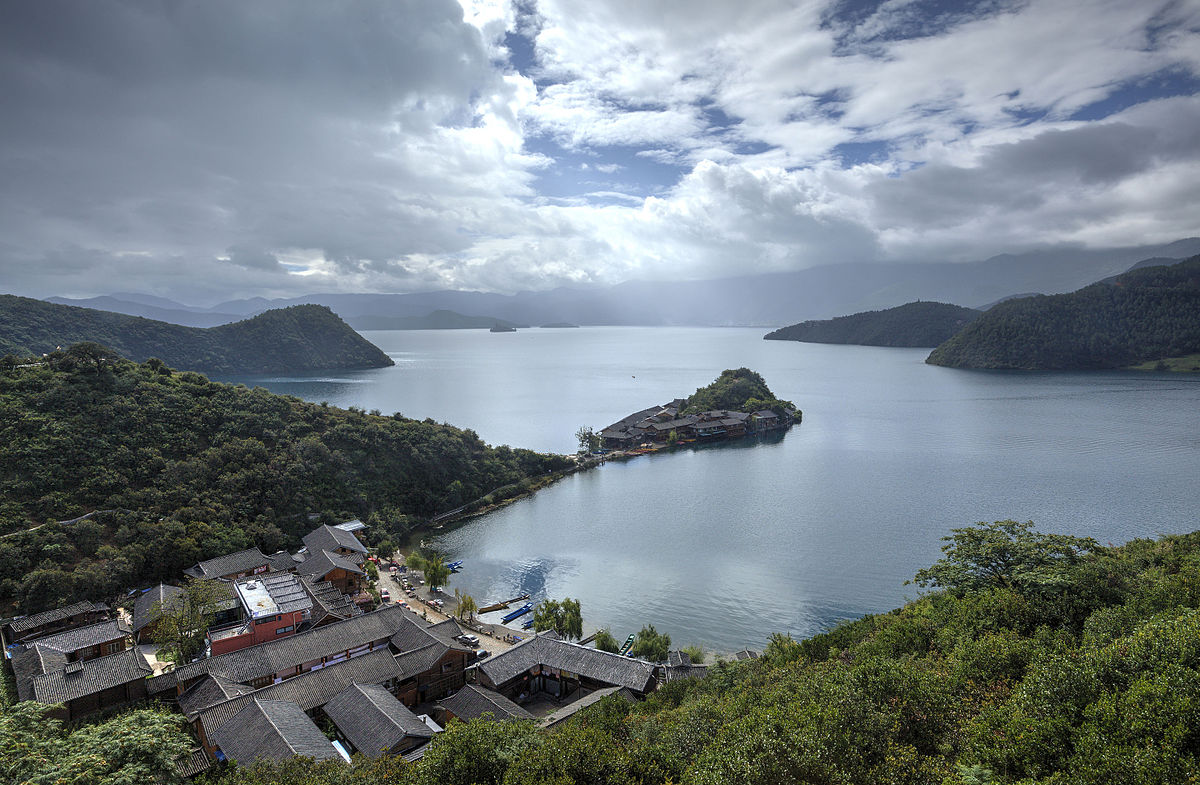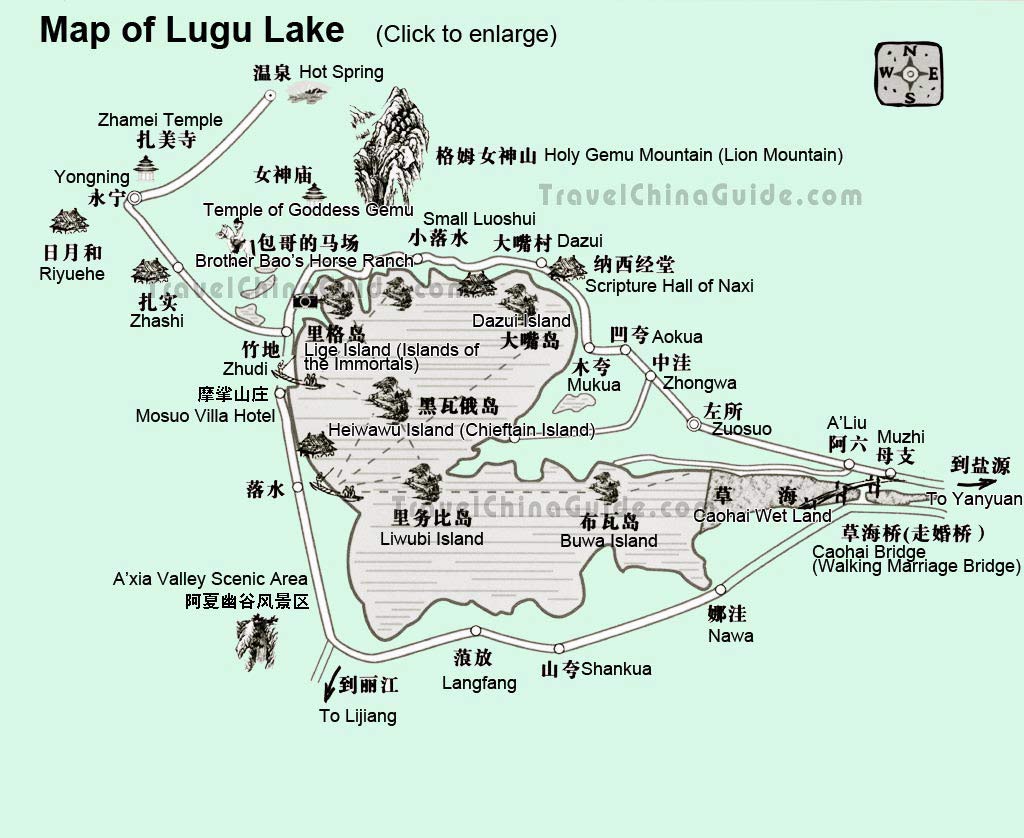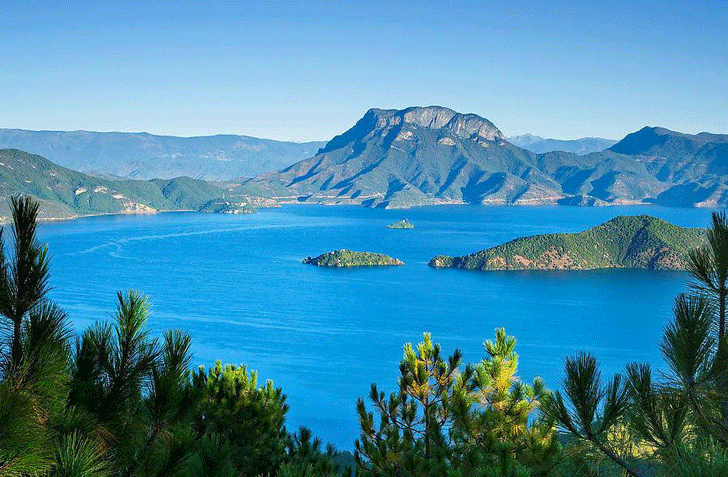



Lugu Lake is located between Ninglang County in Yunnan Province and Yanyuan County in Sichuan Province, 300 kilometers away from Lijiang County. It is a plateau lake with a total area of 52 square kilometers, 2685 meters above sea level. The average depth is 45 meters, the deepest point being 93 meters. The water is very clear. The lake remains an uncontaminated plateau lake.
The history of the Mosuo people has been recorded in numerous historical records. Records of the Grand Historian and History of the Han Dynasty referred to them as “Mao Niu Qiang” and “Mao Niu Yi”. In ancient times, the Mosuo were nomadic people. Thus, they also went by the name of yak keepers. The word Mosuo first appeared in Prefecture V of Volume 23 of History of the Eastern Han Dynasty. The land was described as having salt pits. The people were referred to as Mexie or Moxi during the Tang and Song dynasties, as Mosha and Mexie during the Yuan Dynasty, as Moxi and Mexi during the Ming Dynasty, and as Mosa and Mosu during the Qing Dynasty. During the Warring States period, the Qiang tribe had a chieftain named Qiong. To evade threats from the Qin Kingdom, he led his clansmen southward to settle in Gansu, and also northwest and southwest to settle in Sichuan province. Later, the migrated to Yuexi (southeast of Xichang in Sichuan province). The Wudu Qiang tribe was called “Wudu Qiang”. The Yuexi Qian tribe was referred to as “Yuexi Qiang”. The “Maoniuy” people, or “Yuexi Qiang” of ancient times, were known as the “Mexie” people during the latter years of the Han Dynasty. The “Mexie” lived in the Dadu River Valley for many years. Some of them moved to Yalong River. Later on, the Mosuo migrated southward to Dingzuo, which is today’s Yanyuan, Ningyong and Lugu Lake in Sichuan province. As recorded in the History of the Yuan Dynasty • Geography Records, the Mosuo had settled in Yongning for 1,500 years. The Ascending Guide Sutra of Mosuo Daba recorded the Mosuo living in Langqu, having migrated from Waru (today’s Qiansuo township of Zuosuo District in Sichuan province). Sixty-two generations of Mosuo people have lived in this area. In modern times, the Mosuo people mainly lived along the upper reaches of Jinsha River. Their settlements include Yanyuan, Muli and Yanbian counties of Sichuan province, and Ninglang of Yunnan province. There are about 20,000 Mosuo people in Ninglang, and in nine townships including Yongning, Labo and Hongqi. Mosuo people also live in Lijiang, Yongju, Huaping and Weixi counties. By the end of the 1980s, there were about 40,000 Mosuo people.